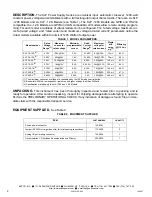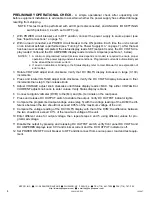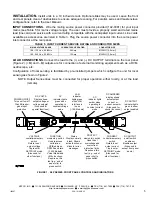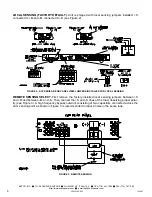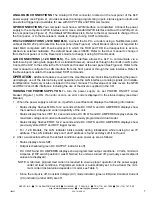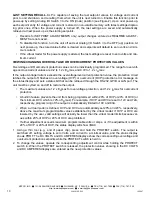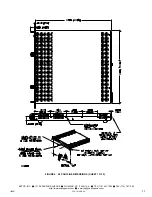
102607
228-1616 REV 2
7
KEPCO, INC.
"
131-38 SANFORD AVENUE
"
FLUSHING, NY. 11355 U.S.A.
"
TEL (718) 461-7000
"
FAX (718) 767-1102
http://www.kepcopower.com
"
email: [email protected]
ANALOG I/O CONNECTIONS.
The Analog I/O Port connector, located on the rear panel of the KLP
power supply (see Figure 2), provides access to analog programming inputs, status signal outputs and
an external trigger input available for use with SCPI *TRG and TRIG commands.
GPIB CONNECTIONS.
Your computer must have a GPIB interface card installed. Connect the power
supply to the computer’s GPIB interface card. Use a standard GPIB interface cable at the GPIB port on
the rear panel (see Figure 2). The default GPIB address is 6. Refer to the User manual to change it from
the front panel, or to the Developer’s Guide to change it using SCPI commands.
RS 232 CONNECTIONS (-1200 MODELS).
Connect the KLP to a modem using a Null Modem patch
cable at the RS 232 port located on the rear panel (See Figure 2). A Null Modem cable is not required for
older MAC computers with D-sub serial port in which the RXD and TXD line transposition is accom-
plished via external hardware. The default baud rate is 38400. Refer to the User manual to change it
from the front panel, or to the Developer’s Guide to change it using SCPI commands.
LAN CONNECTIONS (-1.2K MODELS).
The LAN interface allows the KLP to communicate via a
built-in web port (using web pages from a standard browser), as well as through other built-in LAN ports.
Connect the KLP to the LAN via the RJ 45 LAN port located at the rear panel (See Figure 2). Refer to the
User manual to configure the LAN interface from the front panel or through the web interface. Refer to
the Developer’s Guide for the associated SCPI commands
OPERATION.
Additional features covered in the User Manual are: Quick Boot (eliminating the power-
up displays), use of the internal relay, and operation via the LAN interface or analog signals. An Installa-
tion/Operation Summary is also included in the User manual. The Developer’s Guide covers the GPIB
and RS 232 and LAN interfaces, including the use of the drivers supplied on the CD.
TURNING THE POWER SUPPLY ON.
To turn the power supply on, set POWER ON/OFF circuit
breaker (Figure 1) to ON. If an error occurs, an error code is displayed in the status display (see User
Manual.)
1 When the power supply is turned on, it performs a self-test and displays the following information:
• Status display flashes MODL for 2 seconds while DC VOLTS and DC AMPERES displays show
the maximum voltage and current capability of the unit.
• Status display flashes VIRT for 2 seconds while DC VOLTS and DC AMPERES displays show the
maximum voltage and current allowed for a previously programmed virtual model.
• Status display flashes PROT for 2 seconds while DC VOLTS and DC AMPERES displays show
previously stored OVP and OCP trigger levels.
• For -1.2K Models, the LAN indicator blinks rapidly during initialization while looking for an IP
address. The LAN indicator stays on if an IP address is found and stays off if not found.
2 After a successful self test, the default conditions upon power up are as follows:
• Status display shows SET,
• Output is disabled (green DC OUTPUT indicator is off).
• DC VOLTS and DC AMPERES displays show programmed output conditions: 0 Volts, minimum
Amperes (if DIP switch position 3 was ON when the unit was turned off, previously saved setpoint
values are displayed).
NOTE: A minimum programmed current is required to ensure proper operation of the power supply
under all load conditions. Programmed current is automatically set to be at least the mini-
mum current (actual value depends on model, see Table 1).
• Since the output is off, Constant Voltage (CV) mode indicator (green LED) and Constant Current
(CC) indicator (amber LED) are off.
Содержание KLP 10-150-3
Страница 13: ......
Страница 14: ......
Страница 16: ...FOLD HERE Please place stamp here KEPCO INC 131 38 SANFORD AVE FLUSHING NY 11355 USA CUT HERE ...


